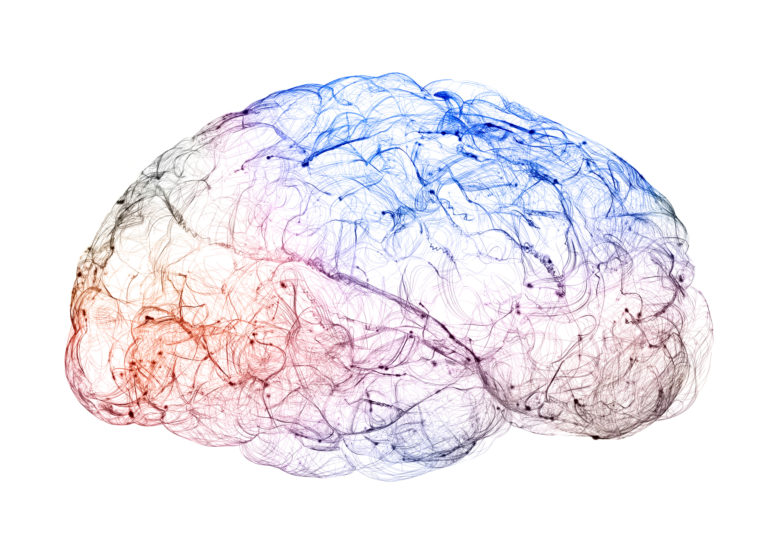Brain–computer interface (BCI) technology holds promise for providing functional support systems for people with neurological disorders and other disabilities. In experimental laboratory settings, BCIs have allowed patients to communicate with researchers and control external devices—all by simply imagining the actions of different body parts.
BCIs work by reading signals from the brain and using machine learning algorithms to translate the signals into an external action, such as moving a cursor on a screen or manipulating a robotic limb. The most successful BCIs collect brain signals with electrodes implanted in the brain. Since this method requires surgery and involves considerable risks, a major goal in the field is to find a noninvasive alternative. However, BCI systems that use noninvasive methods (such as electrodes placed on top of the scalp) receive signals disturbed by noise, leading to lower resolution and less precise control.
Now, a new system developed by researchers at Carnegie Mellon University, in collaboration with the University of Minnesota, has been shown to overcome this problem. In a 2019 paper in Science Robotics [1], the researchers presented an innovative, noninvasive BCI for continuous robotic arm control. The system demonstrated targeted improvements to both the user learning (“brain” component) and the machine learning (“computer” component) elements of a BCI.
Bin He, lead author of the study and head of the Department of Biomedical Engineering at Carnegie Mellon University, is excited about the possibilities of the system (Figure 1). He envisions a future in which BCIs will not only enrich the lives of disabled patients, but also have wider applications. “This work represents an important step in noninvasive BCIs,” says He. “Someday, they could become assistive technologies that aid everyone, much like smartphones.”
Deciphering brain activity
Although invasive BCIs have been shown to achieve good performance for controlling robotic devices, their use is limited to just a few clinical cases. Implanting electrodes within the brain requires a substantial amount of medical and surgical expertise and poses potential risks to the subject.
BCIs that use noninvasive, external sensing, rather than implants, may be easier and more comfortable for both the subject and the experimenter. However, since noninvasive electrodes sit on top of the head, further away from the origin of the brain signals they record, the signal quality is lower. Murkier signals mean less precise control. Thus, performance with noninvasive BCIs has not been able to match that achieved with invasive systems.
The most common recording mechanism for noninvasive BCI is the electroencephalogram (EEG). Gert Cauwenberghs, a bioengineer at the University of California, San Diego (Figure 2), who was not involved in this study, says that EEG is an underappreciated modality. “EEG is easy to apply, comfortable, and unobtrusive, but there are challenges associated with precisely decoding the brain signals,” he says.

EEG electrodes placed on the scalp can detect electrical changes in brain activity with millisecond resolution. However, spatial resolution has been limited to centimeters, encompassing the activity of many hundreds of neurons. Since EEG cannot record activities with single-neuron resolution, noninvasive BCIs cannot match invasive BCIs in terms of accuracy and directness. But, He considered this disadvantage from another perspective. The brain’s functional activities result from large numbers of synchronized neurons. Their coordinated functional activation can be recorded by EEG and, in fact, be more functionally meaningful than the activities of single neurons [2]. The challenge then is to tune out the noise and pick up the meaningful activity of the appropriate neurons.

Improvements lead to success
The new noninvasive BCI system described by He and his colleagues moves the field forward with two innovations. The first important contribution was the use of EEG source imaging, a model-based imaging technique that uses the electrical properties and geometry of the head to estimate brain activity. He developed a real-time EEG source imaging platform that increased the spatial resolution of data collected through noninvasive electrodes. Through EEG source imaging, He and his colleagues were able to reject more background noise and estimate the brain signals in the motor cortex from sensors placed on the scalp (Figure 3).

The second contribution involves how the 68 able-bodied subjects who tested the BCI were trained. Subjects in BCI experiments often train with discrete trials where they practice moving a cursor up, down, left, or right with their thoughts. In an alternate approach called continuous pursuit, the subject must use their brainwaves to chase a randomly moving cursor that can move in all directions.
The integration of these two improvements led to performance never before achieved with a noninvasive BCI. During testing, subjects were able to control a robotic arm to continuously track a cursor in real time. Performances rivaled those sometimes seen with invasive BCIs.
José del R. Millán, a professor in the Department of Electrical and Computer Engineering at The University of Texas at Austin (Figure 4), believes He and his colleagues’ study is a big step forward for noninvasive BCI. “I think this is a landmark paper,” says Millán, who was not involved in the study. “It is pushing the frontier of what can be done with noninvasive technologies.”

A BCI for everyone?
The hope of He and others who work on BCIs is that such systems could soon assist patients with paralysis or movement disorders. Noninvasive BCI technologies could offer safe “mind control” of devices that give people more control over their environments. For instance, brain-controlled prosthetic limbs or robotic arms could allow patients without the use of their arms to interact with their surroundings with greater control.
Although prototypes of these kinds of devices have been tested in laboratories, some time is needed to ensure the devices are reliable and robust before they can be commercialized. He thinks it is likely that in 20 years, brain-controlled artificial limbs, wheelchairs, and communication devices will be commercially available to improve the quality of life of disabled people [2].
In the more distant future, He sees even wider application possibilities. “Working in BCI for over a decade now, I have observed that we do not have to limit it to helping paralyzed patients,” says He. “Noninvasive BCI technology can become an assistive technology, helping every human individual.”
Cauwenberghs agrees that improved noninvasive BCIs could potentially free up one’s limbs to do other things. “The ability to use your mind to control some interface could be very useful,” he says. “This type of technology could be used to navigate content on a computing device without moving your hands.”
Millán notes that He and his colleagues’ methods demonstrate that learning how to control a robotic limb with one’s thoughts is achievable by anyone, given the proper training and neural decoding algorithms. “This shows that with sufficient training, people can reach a satisfactory level of control,” he says. “It shows that anyone can use a BCI.”
Innovations like those of He and his colleagues are moving us closer to a future where convenient brain-controlled devices are used like today’s smartphones. “My dream is to push noninvasive BCI forward and make it an available technology to every individual in the future: mind control for our daily lives,” says He.
References
- B. J. Edelman et al., “Noninvasive neuroimaging enhances continuous neural tracking for robotic device control,” Sci. Robot., vol. 4, no. 31, p. eaaw6844, 2019, doi: 10.1126/scirobotics.aaw6844.
- C. Li and W. Zhao, “Progress in the brain–computer interface: An interview with Bin He,” Nat. Sci. Rev., vol. 7, no. 2, pp. 480–483, 2020, doi: 10.1093/nsr/nwz152.



